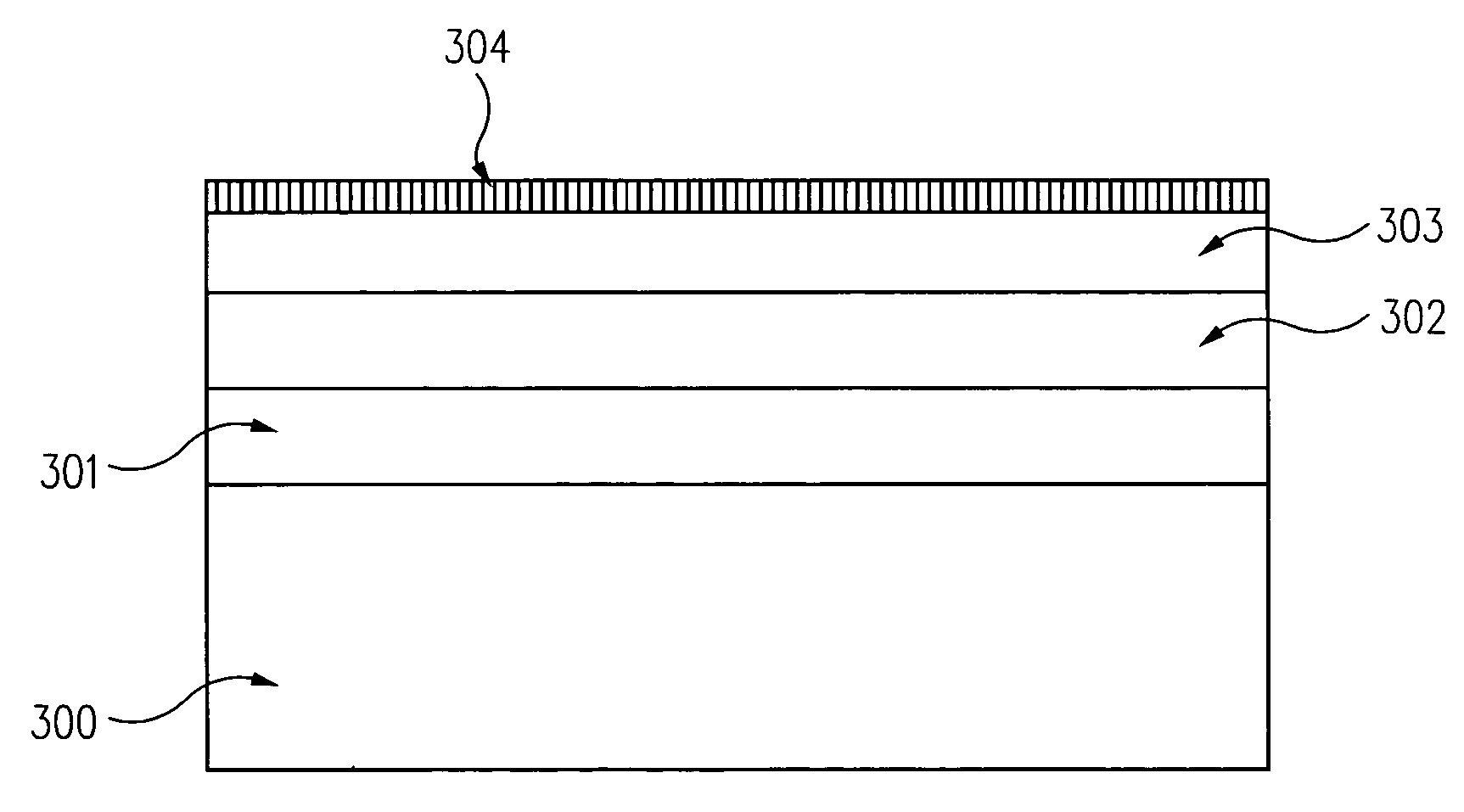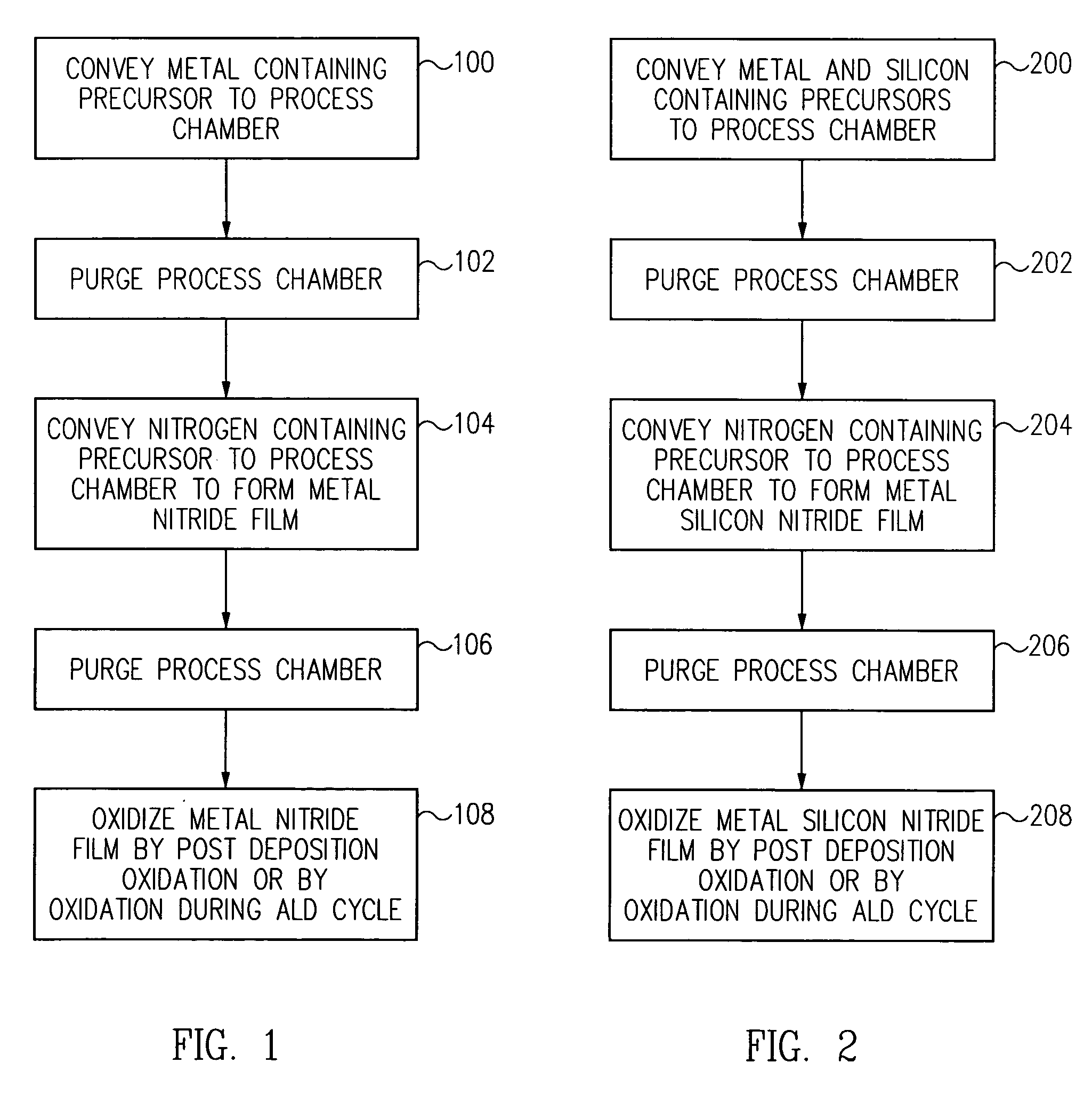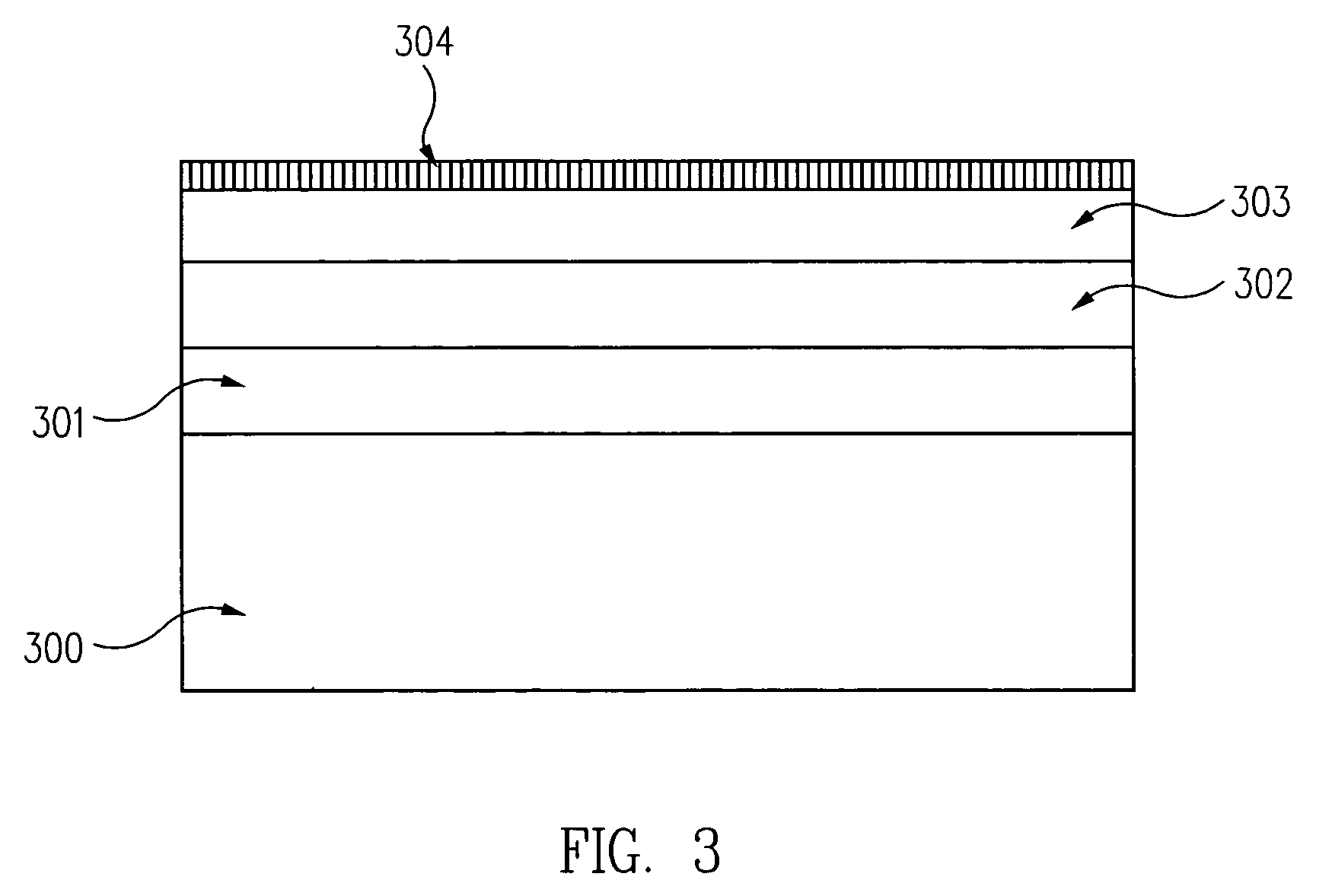Nitridation of high-k dielectric films
a dielectric film, high-k technology, applied in the direction of coatings, chemical vapor deposition coatings, metallic material coating processes, etc., can solve the problems of high leakage current, low mobility, and use of pure metal-oxygen compounds as gate dielectric layers, and achieve stable interface, high mobility, and promote the desired dielectric properties of the layer
- Summary
- Abstract
- Description
- Claims
- Application Information
AI Technical Summary
Benefits of technology
Problems solved by technology
Method used
Image
Examples
Embodiment Construction
[0022] The method of the present invention promotes incorporation of nitrogen (e.g., nitridation) into high-k dielectric films using a low temperature process. Further, the present invention allows for in-situ processing, that is formation of the high-k dielectric film and nitridation of the film are carried out in the same process chamber during deposition of the film, as opposed to the conventional techniques, which carry out nitridation of the film in post processing steps.
[0023] In one aspect of the present invention, a method is provided for forming a nitrided metal oxide film by atomic layer deposition (ALD) where nitrogen is incorporated into the film during deposition. In general, an illustrative embodiment the present invention provides a method of incorporating nitrogen into high-k dielectric films by providing precursors or reactants that contain a nitridation reactant into a process chamber and carrying out atomic layer deposition (ALD) at relatively low temperatures, s...
PUM
| Property | Measurement | Unit |
|---|---|---|
| Temperature | aaaaa | aaaaa |
| Temperature | aaaaa | aaaaa |
| Temperature | aaaaa | aaaaa |
Abstract
Description
Claims
Application Information
 Login to View More
Login to View More - R&D
- Intellectual Property
- Life Sciences
- Materials
- Tech Scout
- Unparalleled Data Quality
- Higher Quality Content
- 60% Fewer Hallucinations
Browse by: Latest US Patents, China's latest patents, Technical Efficacy Thesaurus, Application Domain, Technology Topic, Popular Technical Reports.
© 2025 PatSnap. All rights reserved.Legal|Privacy policy|Modern Slavery Act Transparency Statement|Sitemap|About US| Contact US: help@patsnap.com



